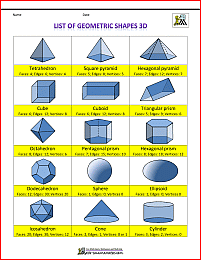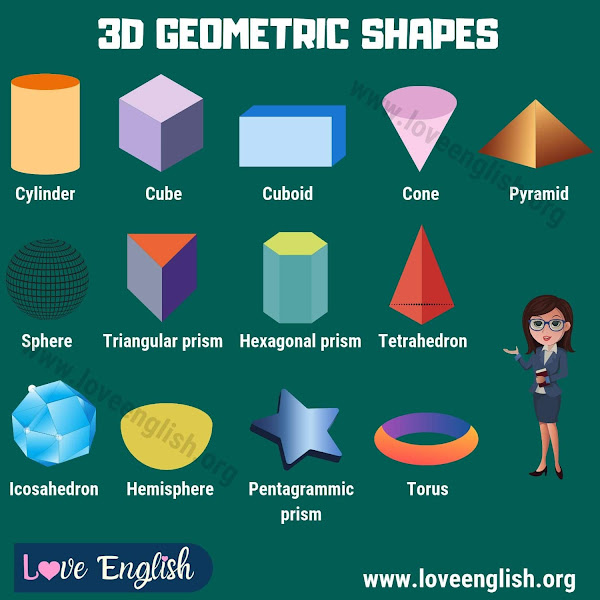For instance, a tesseract, also referred to as a hypercube, is the four-dimensional equivalent of a cube. It is a regular four-dimensional polytope, just as a cube is a regular three-dimensional polyhedron. As a cube has six square sides, a tesseract has eight cubical cells. Apart from the tesseract, there are five more conventional four-dimensional polytopes, including the five-cell pentachoron and the 600-cell (!) hexacosichoron tetraplex polytetrahedron. This form of geometric abstraction might theoretically be extended indefinitely, resulting in an ever-expanding upward hierarchy of multi-dimensional shapes. Additionally, the inclusion of non-Euclidean geometries enables the fabrication of unusual analogs to forms present in Euclidean geometry with unique features. For instance, the internal angles of a non-Euclidean triangle might add up to higher than or less than 180°, depending on the non-Euclidean geometry utilized.
Let us discuss platonic solids. What are you saying? Okay, how about we speak about three-dimensional geometric shapes? Does that seem a bit less intimidating? If you, like me, have a math instructor in your life (my brother), you can impress them with your knowledge of the unique polyhedron known as platonic solids by the conclusion of this assignment. How's that for some math entertainment? And don't worry, I'll explain the meanings of all of these ten-dollar terms as well! Sakura of America sponsored this post.
While we are naturally attracted to symmetrical lines and figures of similar length, occasionally you need an element of surprise to capture your audience's attention. Overlapping disjointed forms and lines creates an entirely abstract look. As with constructing a mosaic character, you may utilize a range of shapes and colors to build a fresh new picture from start. The greater the geometric shapes in your design, the more abstract it will seem.
Perhaps the most obvious lesson, yet one of the most often forgotten: less is more. Geometric patterns do not have to be used liberally across your website. The Tea Factory is an excellent example of how to use geometric patterns effectively by restricting them to its header. Utilize sparingly to prevent overwhelming the observer and to emphasize the patterns.
Geometric Shapes Names 3D
Cones have a flat (circle-shaped) base and a pointed top. The cone's pointed top end is referred to as the âApex.â A cone, too, has a curved surface. For instance, an ice cream cone, a party hat, or a Christmas tree. Torus A torus, which is sometimes referred to as an O ring, is a doughnut-shaped object. It is formed by spinning a smaller circular object with a smaller radius (r) around a bigger circular object having a greater radius (R). For instance, a tire, a ring, or a doughnut.
There are only five Platonic Solids, which makes them very rare. Plato, the Greek philosopher, identified the distinct forms, which were known as âPlatonic solids. †Tetrahedron A tetrahedron is a polyhedron with four triangular faces. Cube A cube has six square faces and is perhaps the most identifiable Platonic solid. Octahedron An octahedron is a polyhedron with eight triangular faces. Dodecahedron A dodecahedron is a polyhedron with twelve pentagonal faces. Icosahedron An icosahedron is a polyhedron with twenty triangular faces.
3D Shapes Mathematical Names
Equilateral Triangle Sides: three Angle: sixty degrees Interior angles add up to 180 degrees Irregular Triangle Square Sides: four Angle: ninety degrees Interior angles add up to 360 degrees Irregular Quadrilateral Pentagon Sides: 5 Angle: 108° The inside angles sum out to 540° 6 Hexagonal Sides 120° Interior angles total 720° Hexagon with an irregular shape Heptagon has seven sides and an angle of 128.6°. (to 1dp) Interior angles total 900°. Irregular Heptagon 8 Octagonal Sides 135° Angle Interior angles total 1080°. Irregular Octagon 9 Nonagonal Sides 140° Interior angles total 1260° Irregular Nonagon Ten Decagonal Sides 144° Interior angles add up to 1440° Decagon with an irregular shape Hendecagon: 11 vertices Angle: 147.3° (to 1dp) Internal angles total 1620° Irregular Hendecagon 12 Sides Dodecagon Angle: 150° Interior angles total 1800° Irregular Dodecagon Interior Angles of a Polygon Formula
Calculate the number of facets in each of the balanced symmetric solids constructed from triangles and squares. The prefix polyhedron refers to the tetrahedron, octahedron, and icosahedron. Counting the faces on the cuboctahedron and rhombicuboctahedron, on the other hand, is a little more difficult. Encourage your pupils to keep a systematic record of their data: Solid Faces' number and form Vertices count The total number of edges Tetrahedron 4 triangular shapes Octahedron with eight triangles Icosahedron with twenty triangles 6 triangles triangular dipyramid Cuboctahedron with eight triangles and six squares 8 triangles 18 squares Rhombicuboctahedron Identify systematic methods for counting the number of faces. This may entail segmenting the solid or painstakingly accounting for each vertex.
Math 3D Shapes Names
Page 1 of 16 A Sphere's Surface Area and Volume Russell, D. A sphere is a three-dimensional circle. To calculate the surface area or volume of a sphere, you must first determine the radius (r). The radius is the distance from the sphere's center to its edge, and it is constant regardless of where point on the sphere's edge is measured. Once you've determined the radius, the calculations are quite straightforward to recall. As with the circle's circumference, you'll need to utilize pi (). In general, this infinite number may be rounded to 3.14 or 3.14159 (the standard fraction is 22/7). Volume = 4/3 r3 Surface Area = 4r 2Volume = 4/3 r3
Squares are made up of four equal sides and four right angles. They are symmetrical along four lines. Squares are all members of the rectangle family. All squares are rhombuses. All squares are parallelograms as well. Rectangle Rectangles have four equal sides and four equal angles. They are all symmetrical on two lines (four lines if they are also squares!) Rectangles are all members of the parallelogram family. Rhombus
Circle
What is the circumference of a circle? That is an excellent question! Unfortunately, there is no satisfactory response, since "sides" refers to polygons, a two-dimensional object having at least three straight sides and generally at least five angles. The majority of common forms are polygons, however circles lack straight edges and most emphatically lack five angles, making them non-polygons.
















